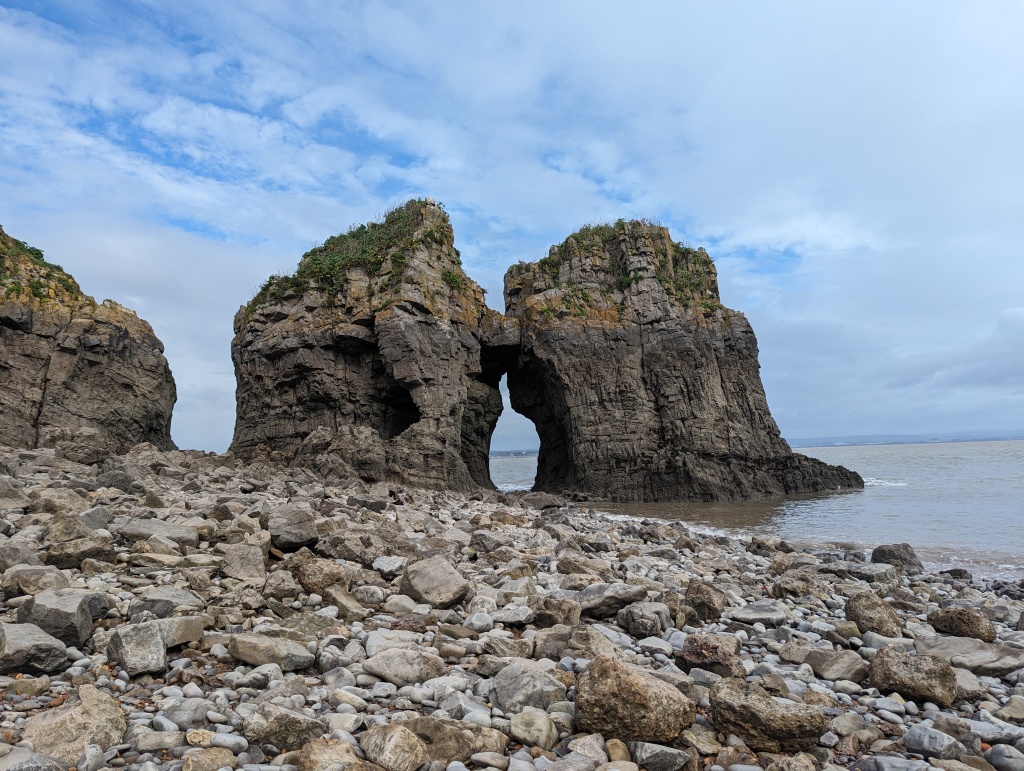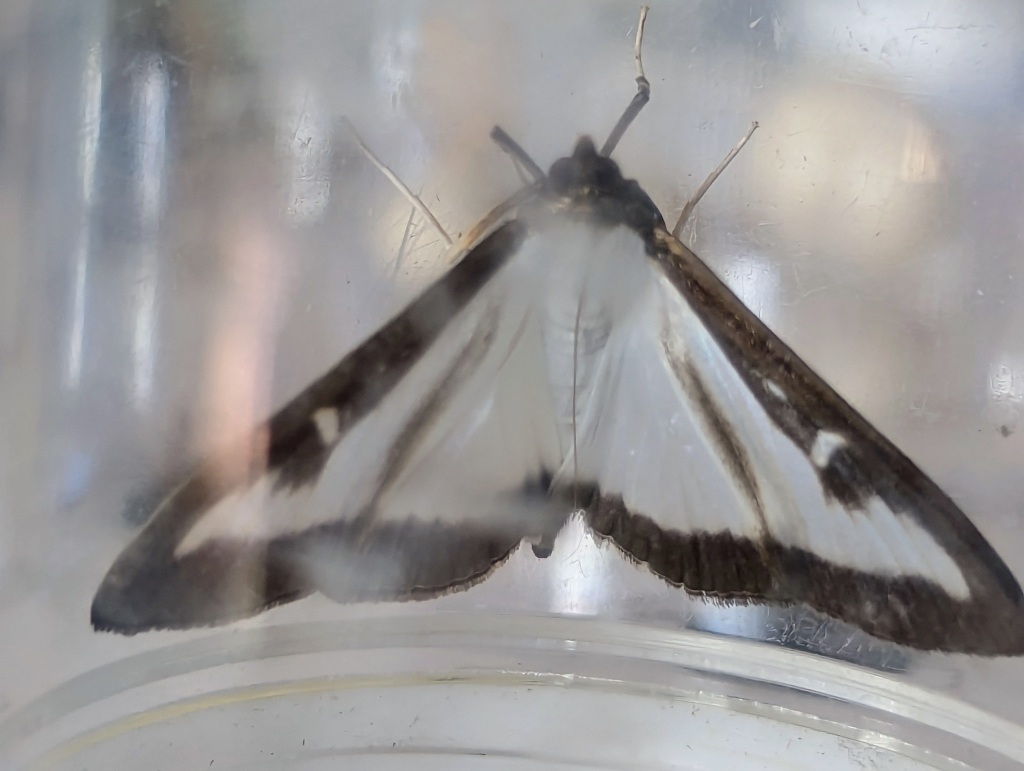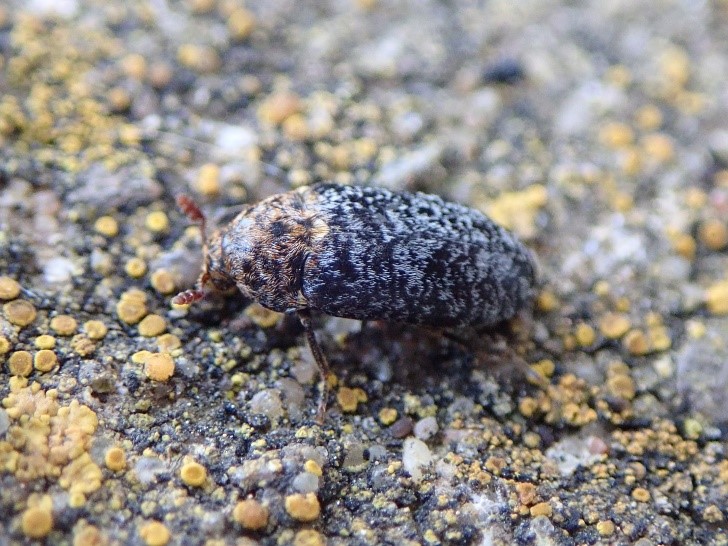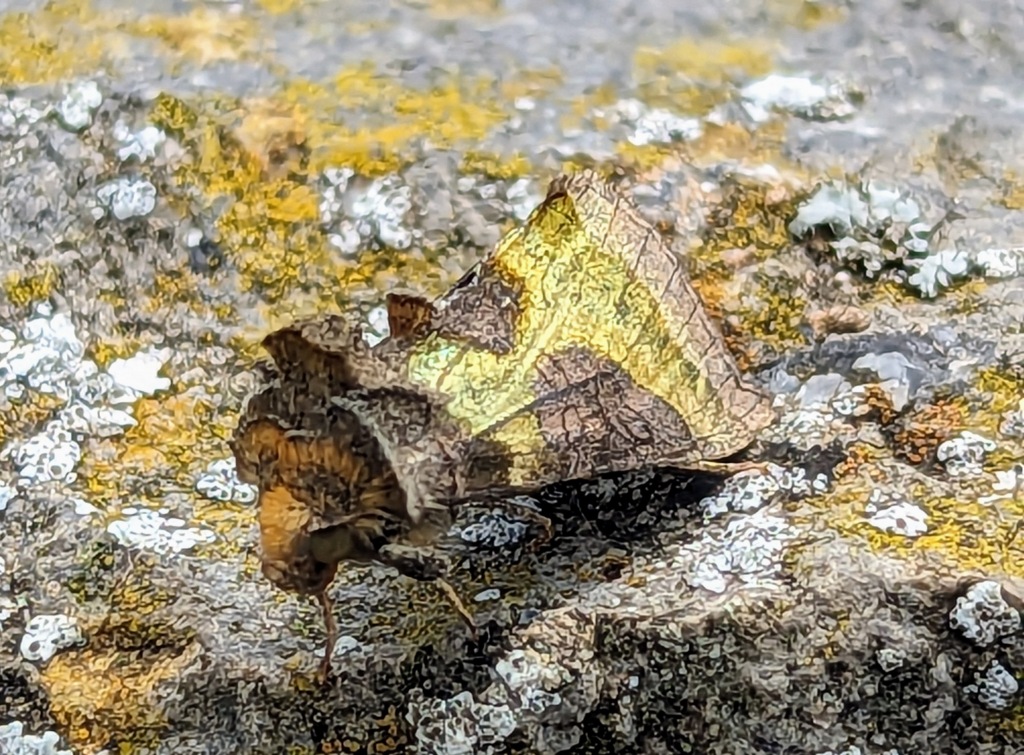Flat Holm BioBlitz!
Hi friends, Sarah here. We were lucky enough to host a team of experts on the island recently, to study the island’s biodiversity. Among their discoveries were some new records for the island, some new records for Wales, and even a species that may be new to science!
Meeting a literal boat-load of experts (3 seats shy of a boat-load to make room for me and some kit!) was a slightly intimidating task for my second week on the job. As it turned out, all the experts were not only leaders in their fields but also lovely people too. Our dream team consisted of insect, fungi, plant, bat, and marine life experts. Before we could even get on the boat, the team spotted some orb weavers on the jetty!
The sun was beaming down on us as we raced across the Bristol Channel to Flat Holm. For some of the expert team this was their first trip to the island, and they were raring to go. One of the biggest lessons I learned from this trip is how difficult it is to organise a team of ecologists. You can’t walk very far without them spotting something interesting! They are also impossible to find once they start to explore. Many of the team were on the hunt for rare and elusive species which meant exploring areas of the island I had never been to. I followed experts into sea caves halfway up cliffs, drainage ditches full of elder trees and brambles, and even on a nocturnal excursion into a World War Two bunker to look for clothes moths!
Day two was off to a strong start with a 6am wake up call for a jog around the island and moth trapping! To catch and record the moths, the experts set up 5 different traps around the island, some of which were monitored at night and taken down, and some of which were left running all night. From the overnight traps, we caught an amazing array of species including a Box Tree Moth (Cydalima perspectalis) with the most amazing iridescent wings, a first for the island but unfortunately an invasive species. We also welcomed a group of 12 learners onto the island. They followed the experts around the island learning ID skills. Emma, one of our expert team also taught us how, when, and where to look – a skill sometimes more valuable than ID skills! Another takeaway from this weekend for me was how much can be found in the smallest places, from microscopic cup fungi on twigs to tiny moths living inside bracken stems. We ended the evening with yet more moth trapping and of course a visit to the island pub, the Gull and Leek! Our bat expert, Alex, led the learners on a bat walk and recorded the calls of Soprano and Common Pipistrelles.
Day three was a rough start with damp conditions meaning all hands-on deck to empty the moth traps before they became too wet. We were fortunate to still have some amazing finds, such as a Burnished Brass Moth that has the most amazing camouflage. We also had a repeat find of a red false truffle – a real rarity! The day absolutely flew by and before I knew it, it was time to head to the jetty but not before a final incredible find. Two of our experts, while shaking a gull carcass over a tray (as you do), discovered a rare species of beetle, Dermestes undulatus, a first for Wales. It has also not been recorded in England since 2020, meaning our island could be the last stronghold of this species in the UK! These tiny beetles live inside of and feed on carcasses. Dermestes literally means skin eater, alluding to this beetle’s preference for dried out bodies and remains of animals such as skin, fur, and bones. They can be a bit of a pain in museum collections but are incredibly useful in forensic science to help determine how long a body has been in situ! How they got to the island is a bit of a mystery, given that they appear to be completely absent from the mainland now, but it’s possible they were brought by gulls carrying scavenged remains. The questions are endless, this could be the start of some really exciting research!
Back on the mainland, the fun doesn’t stop! To verify this amazing scientific discovery, we needed to transport samples of the beetle to an expert for microscopic and genetic analysis. How many people can say they’ve had a rare species in their passenger seat?!? Of course, with a seat-belt on and driving very, VERY, carefully.
Thank you to George Tordoff for his incredible photo of Dermestes undulatus and apologies for attributing it to another photographer!
We’re already planning another BioBlitz next spring and I can’t wait! Want to be part of the team? Join us as one of our learners. Email me sarah.morgan5@cardiff.gov.uk for more details and to book your spot!
You can also follow us on Facebook @Flatholm, on Twitter @Flatholmers or on Instagram: @FlatHolmIsland
I would love to visit your school or community to tell the stories of Flat Holm and share the adventures of the Flat Holm warden and team! To book an outreach session please email me at sarah.morgan5@cardiff.gov.uk
A massive thank you to our funders at the National Lottery Heritage Fund and the National Lottery players, who make all our work possible.










Leave a comment